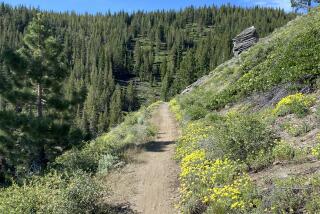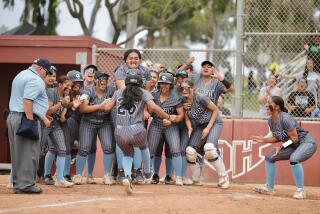Carson City Issues Remain Fascinating
Question: Can you tell me the value of a Carson City silver dollar, uncirculated, 1884? It is enclosed in a plastic case in which it was purchased from the U.S. government.--A.P.
Answer: There is a mystique about Carson City coins that has long fascinated collectors. The Carson City branch mint was authorized by Congress during the height of the Civil War in 1862, at the urging of Abraham Curry, a transplanted New Yorker who built a town in Nevada to memorialize the frontiersman Kit Carson. The mint began operating in 1870, with coins characterized by the CC mint mark. Interestingly, Carson City is just 21 miles from the Comstock Lode, where much of the silver and gold ore was mined for coin production.
However, the Comstock Lode at Virginia City was so fertile that it threatened the balance of gold and silver in the nationâs money supply. The value of the silver in a dollar, for example, was getting to be less than a dollar. This is hard to comprehend now, in a time when we accept paper money and coins with virtually no intrinsic value. Congress eventually passed the Coinage Act of 1873, known as the âCrime of â73â to some, and the demonetization of silver became a major campaign issue in every presidential election between 1873 and 1900.
In fact, many hard-money advocates still exist. Partly as a response to this, the United States will begin producing and marketing new gold bullion coins in October, adapting a 1907 design by Augustus Saint-Gaudens for the obverse and Miley Busiekâs âFamily of Eaglesâ design for the reverse.
This brings us back to the 1884-CC $1 in question. It undoubtedly was part of a hoard of 3 million Carson City dollars discovered in Treasury Department vaults in 1963.
About 2 million of these coins were sold to the public several years later for about $55 million, and the balance was sold in 1980. They were distinctively packaged and are currently quite popular in the marketplace. Your 1884-CC $1 is one of more than 1.1 million minted and is worth about $100.
Q: I have some coins and would like to know what they are worth and where I can sell them. They are: Indian-head cents from 1885 to 1906; an 1857 Flying Eagle cent with a small hole so it could be used as a watch fob; a few V nickels of different dates; Buffalo nickels 1920-1930; Liberty-head dimes of the â20s and â30s; Standing Liberty quarters of 1917, 1925, 1926, 1927 and 1930; Liberty-head quarters; three proof sets, 1961 and â64; five silver dollars, 1879, 1880, 1900, 1921 and 1922, and silver certificates dated 1935 and 1957.--D.M.
A: The best place to sell coins is with a dealer. Private transactions can be dangerous. Always talk to more than one dealer so you can get the best offer possible. You can reasonably expect 50 cents each for your Indian-head cents, $1 for the holed Flying Eagle, 10 cents each for the Buffalo nickels, 40 cents each for the Liberty-head dimes, $2 each for any of the quarters, $15 each for your proof sets, $8 each for the silver dollars and face value for the silver certificates.
Q: Would you please evaluate the coins that I have received through the years? They are: silver dollars from 1878 to 1926; Kennedy half dollars from 1964 to 1776-1976; Franklin half dollars from 1957 to 1963; Liberty half dollars 1943-A to 1944; an Eisenhower dollar 1776-1976-D, and a $5 gold piece, 1874-CC.--G.M.
A: Your Morgan and Peace dollars are worth $8 each and up, 1964 Kennedy half dollars are $2 each, 1965 to 1969 Kennedy half dollars are 70 cents each, the later Kennedy halves are worth face value, Franklin halves are $2 each, Liberty halves are $2 each, the Eisenhower dollar is face value and the $5 half eagle is $200 and up.
Coin News
Auctions â86, one of the leading numismatic auctions of the year, will be conducted by four major dealers July 25 and 26 at the Hyatt Regency in Chicago. Each of the dealers--Stackâs of New York, Rarcoa of Chicago, Superior of Beverly Hills and Paramount of Miami, will offer 500-lot selections. Mail bids are also accepted. For a catalogue, contact Superior, 9301 Wilshire Blvd., Beverly Hills, Calif. 90210; telephone (213) 272-0851 or 278-9740.
More to Read
Sign up for Essential California
The most important California stories and recommendations in your inbox every morning.
You may occasionally receive promotional content from the Los Angeles Times.










